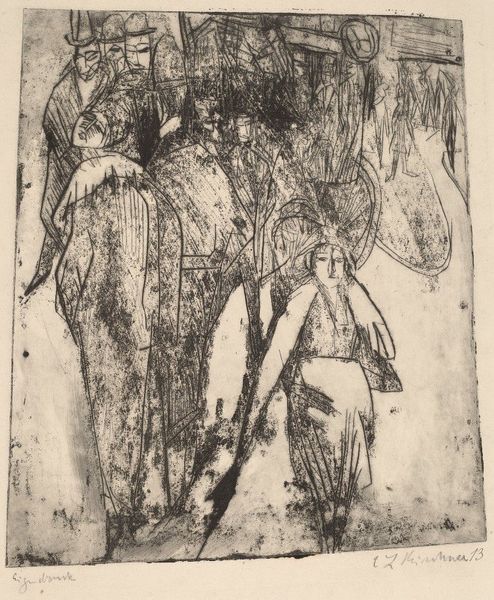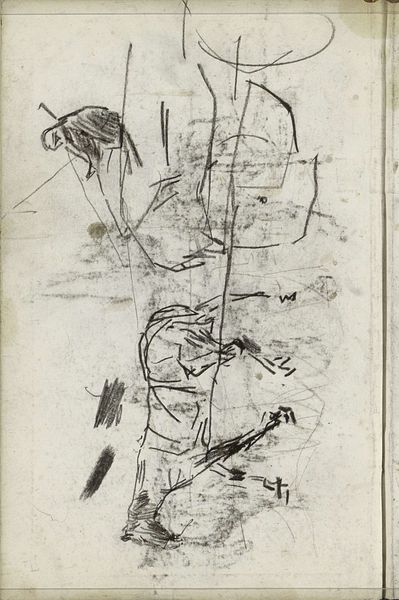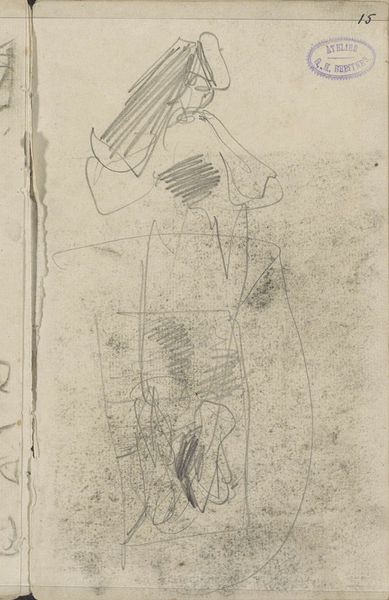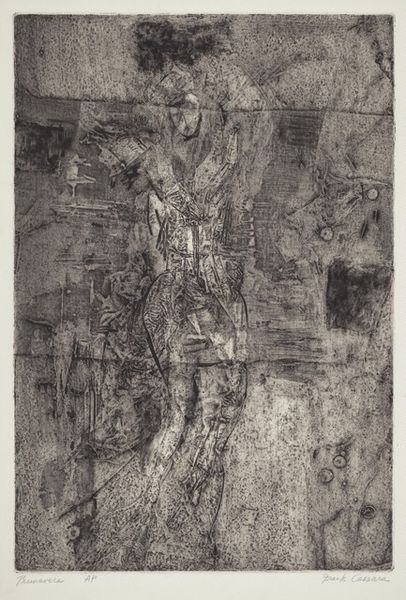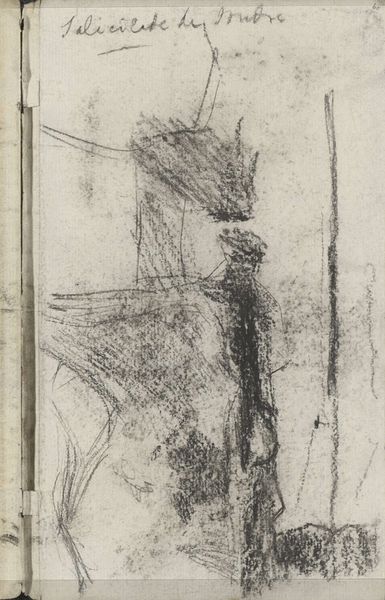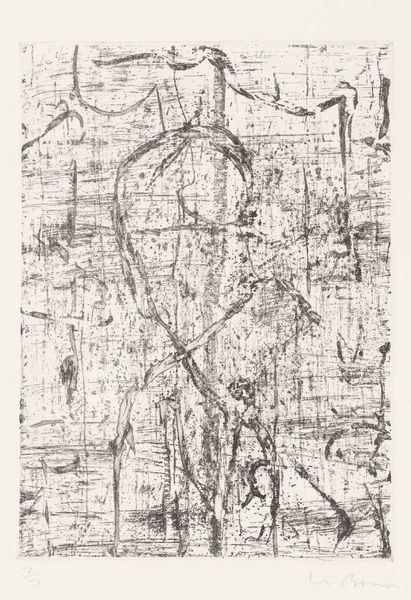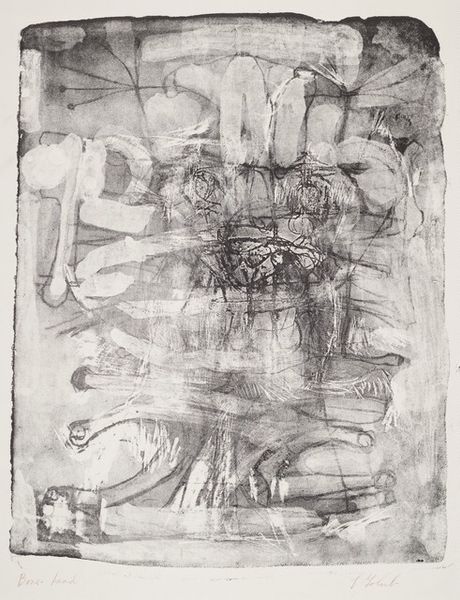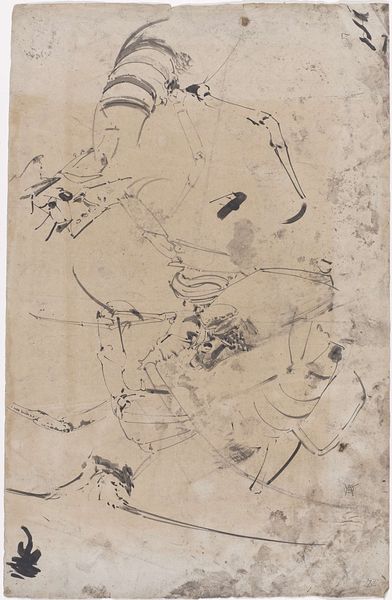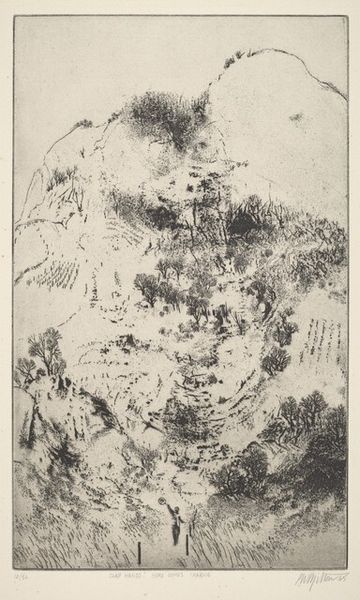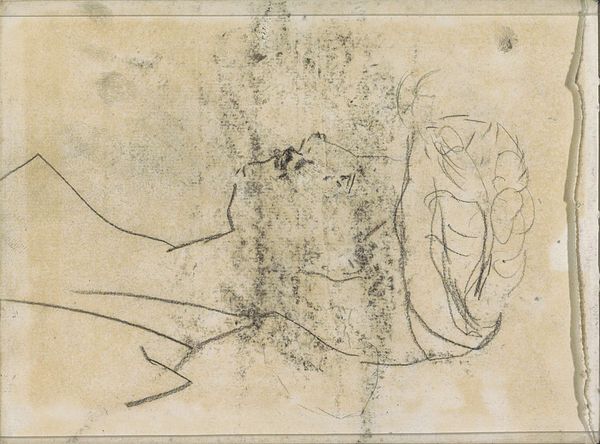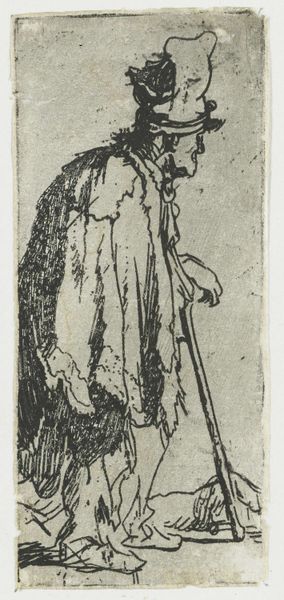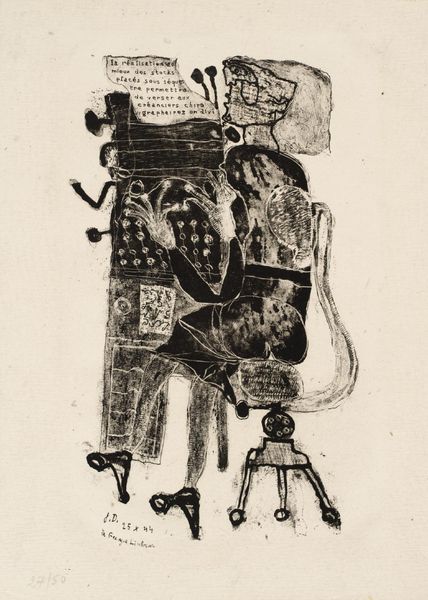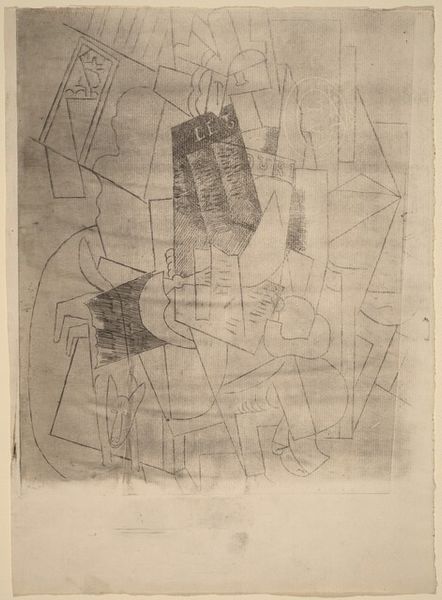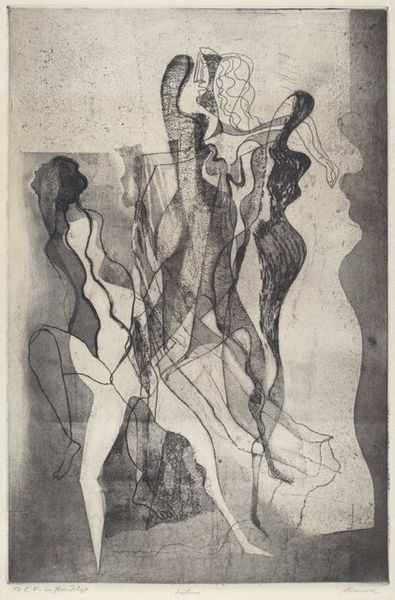
Dimensions: plate: 59.69 × 38.1 cm (23 1/2 × 15 in.) sheet: 67.63 × 52.71 cm (26 5/8 × 20 3/4 in.)
Copyright: National Gallery of Art: CC0 1.0
Editor: This is Horst Janssen's "Don Quixote," an etching from 1958. It's quite a striking image, all scratchy lines and tangled shapes, almost like a disassembled mechanical drawing. It makes me feel slightly uneasy, as if I'm looking at a portrait that's about to fall apart. What’s your read on this piece? Curator: The anxiety you perceive speaks volumes about the period in which it was created and the ongoing function of this subject in contemporary culture. Janssen created this work not long after World War II; anxieties of that time linger in his works. You notice, too, the grotesque exaggerations in line with his embrace of expressionism. This Quixote reflects the unease of postwar Germany grappling with its past and uncertain future, making this depiction intensely political. Do you see any connection between the chosen medium - print - and these politics? Editor: It feels less like a grand painting made for a wealthy patron and more accessible, more democratic, meant for wider circulation. A way of getting a message out? Curator: Precisely! Prints inherently possess the ability to disseminate widely. By using etching to depict this figure, Janssen inserts him into the visual language of social critique, continuing a history of printmaking as protest that stretches from Goya to Kollwitz. Consider how the fragility of the lines reflects the delicate balance between reality and idealism embodied by Don Quixote himself. Editor: So, it's not just about individual expression, but about placing this character into a historical context of both art and politics, especially with printmaking’s history as a medium for social commentary. Curator: Absolutely. Janssen positions Don Quixote as a reflection of post-war society. Are societies idealistic, lost, hopeful, broken? How might our interpretation of his motivations influence that? Editor: That gives me a completely different way of looking at it. I was so focused on the aesthetics, the lines themselves, that I missed the bigger picture entirely. Curator: Understanding the historical and political context allows the lines themselves to speak differently. We begin to recognize in them an attitude as much as a likeness. Editor: Definitely. I’ll never see another etching the same way!
Comments
No comments
Be the first to comment and join the conversation on the ultimate creative platform.
